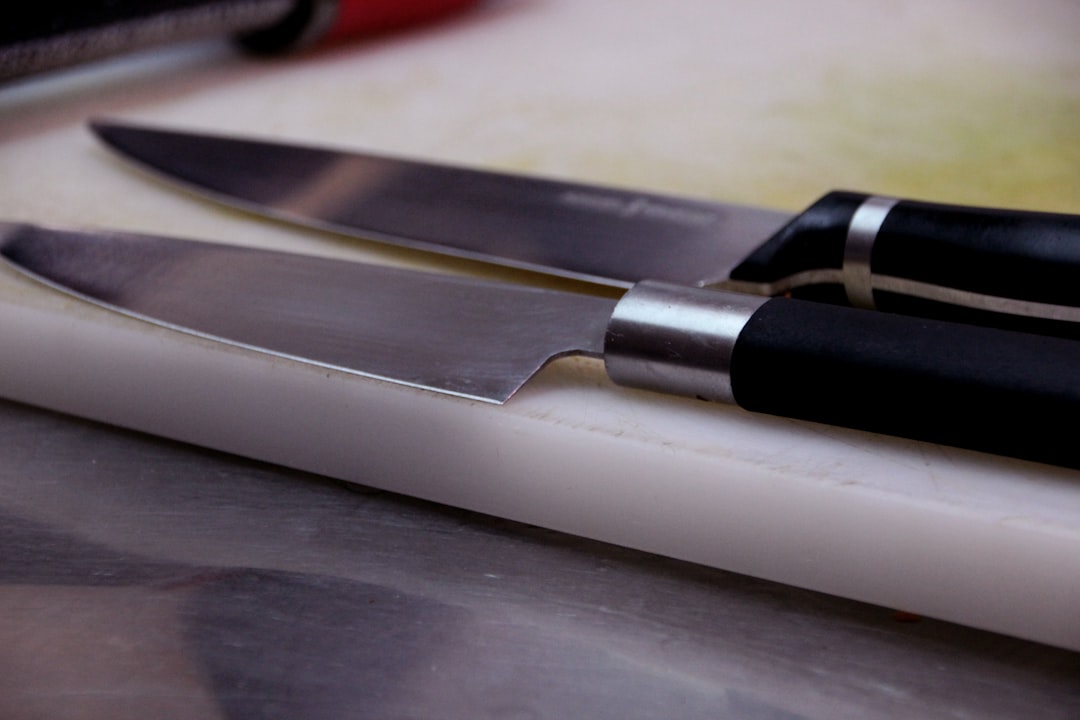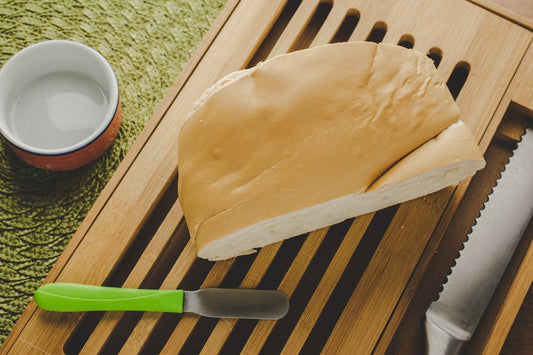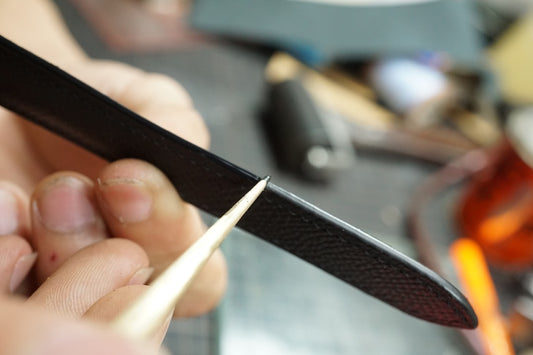
Share
Wa-style vs Yo-style Knives: Detailed Guide to Japanese Knife Anatomy and Construction
Estimated Reading Time: 12 minutes
Key Takeaways
- Understanding Japanese knife anatomy enhances your cooking skills.
- Wa-style knives are traditional, lightweight, and ideal for precision.
- Yo-style knives combine Japanese blades with Western-style handles for versatility.
- Blade grind types affect sharpness, maintenance, and usage.
- Handle materials and steel types influence performance and upkeep.
Table of Contents
Understanding Japanese Knife Anatomy
Understanding Japanese knife anatomy is the first step in choosing the right tool. Every part of a Japanese knife, from its blade to its heel, has a purpose. Each feature influences how the knife feels and performs when you are preparing food.
Key Components of Japanese Knife Anatomy
- Blade: This is the primary cutting surface of the knife. Japanese blades are forged with extreme precision to deliver a sharp edge and a smooth, clean cut. There are different edge profiles, allowing the knife to excel at various kitchen tasks. Japanese knives are famous for their sharpness, flexibility, and meticulous forging, which makes each blade unique with a long-lasting edge. For a deeper dive into blade types, check out our Japanese Chef Knife Types: A Comprehensive Guide to Choosing the Perfect Blade.
- Spine (Mune): The top part of the blade, the spine, adds strength and rigidity. It is generally thicker than the cutting edge and supports the thinness of the blade, making it both durable and effective for slicing and chopping tasks.
- Edge (Ha): The edge, or ha, is the sharpened portion that does the actual cutting. The sharpness and angle of the edge determine how easily you can slice through ingredients. Japanese knives are known for their very acute edge angles, often sharper than their Western counterparts.
- Tang (Nakago): The tang is the part of the blade that extends into the handle. Japanese knife anatomy differentiates between hidden tangs (common in Wa-style knives) and full tangs (used in Yo-style knives). The tang's design affects the knife’s balance, durability, and weight. Learn more about the Japanese Knife Forging Process to understand how tangs are integrated into knife construction.
- Handle: The handle is where you grip the knife. In Japanese knives, handles come in two main styles: Wa (traditional Japanese) and Yo (Western style). The handle's material, shape, and balance have a big impact on comfort and performance, which we explore further below.
- Choil (Ago): The choil is the area where the blade meets the handle. It impacts how easy it is to grip and control the knife, especially for tasks that need fine, controlled cuts.
- Heel (Hamoto): The heel is the back end of the blade, near the handle. It is typically broader and stronger, making it ideal for tough cutting tasks like breaking down thick vegetables or meat with bones.
Cultural and Practical Influences on Japanese Knife Anatomy
Japanese craftsmanship values attention to detail, functional beauty, and lasting strength. These cultural ideals have shaped Japanese knife anatomy for generations. They go beyond looks: every feature reflects practical use and centuries of knowledge passed on by master craftsmen. This thoughtful approach ensures Japanese knives are more than just cutting tools—they are extensions of the chef’s hand.
Wa-style vs Yo-style Knives
The choice between Wa-style vs Yo-style knives is fundamental in Japanese knife selection. Both styles are rooted in centuries of culinary tradition, but they offer different handling, aesthetics, and uses.
Introduction to Wa-style vs Yo-style Knives
Wa-style and Yo-style refer primarily to the construction and shape of the handle, but they can also influence blade design and overall knife balance. Understanding Wa-style vs yo-style knives will help you match the right knife to your cooking needs—precision, comfort, and even visual preferences.
Wa-style Knives
Design Elements
- Feature round or octagonal handles, usually made from lightweight woods like magnolia, walnut, chestnut, or cherry.
- Have a hidden tang construction, meaning the blade's tang is enclosed within the handle.
- Usually include a ferrule, often made of buffalo horn or a durable plastic, to strengthen the joint between wood and blade.
Usage Preferences
- Known for their lightweight feel, making them easy to maneuver for precision cuts.
- Commonly used in traditional Japanese culinary settings, especially in tasks that require fine slicing and delicate handling—like sushi, sashimi, and vegetable preparation.
Cultural Significance
- Embody traditional Japanese aesthetics and craftsmanship.
- The minimal, natural look of the Wa handle reflects Japanese design principles focused on simplicity and beauty.
Yo-style Knives
Design Elements
- Come with Western-style handles, usually made from durable materials like pakkawood, micarta, polymer, or stainless steel.
- Feature full tang construction. The metal of the blade continues the entire length and width of the handle, often visible, and secured by rivets.
Usage Preferences
- Have a heavier handle, creating a balanced or handle-weighted feel that many Western-trained cooks are used to.
- Adapted to general-purpose cooking, ideal for both Japanese and Western culinary styles.
Adaptation and Influence
- Born from the fusion of Japanese blade expertise and Western ergonomics, Yo-style knives appeal to chefs and home cooks who want the best of both worlds—sharp Japanese cutting performance with the substantial grip and familiar feel of Western knives.
Comparison Table: Wa-style vs Yo-style Knives
| Feature | Wa-Style Knives | Yo-Style Knives |
|---|---|---|
| Handle Shape | Round or octagonal wooden handle | Western-style handle with rivets |
| Tang | Hidden tang | Full tang |
| Balance | Blade-forward balance | More balanced or handle-heavy |
| Weight | Lightweight | Heavier |
| Preferred Use | Precision tasks, Japanese cuisine | General-purpose, Western cooking styles |
| Aesthetics | Traditional craftsmanship | Western-influenced design |
Types of Chefs and Cooking Styles
-
Wa-style Knife Users
- Japanese cuisine specialists.
- Chefs and cooks who need delicate, precise cuts, such as for sushi and sashimi.
- Users who appreciate traditional aesthetics and a lightweight, nimble feel.
-
Yo-style Knife Users
- Cooks who want versatility for a variety of kitchen tasks.
- Chefs accustomed to the shape and handling of Western knives.
- People who prefer a more balanced or robust knife for everyday use.
To make the best decision in the Wa-style vs yo-style knives comparison, consider your primary cooking style, comfort with different grips, and the types of foods you prepare most often.
Blade Grind Types in Japanese Knives
Blade grind types in Japanese knives have a big impact on sharpness, maintenance, and suitable uses. The grind refers to how the blade’s edge is shaped and sharpened.
Introduction to Blade Grind Types Japanese Knives
Japanese knives come in two main blade grind types: single-bevel and double-bevel. Understanding blade grind types Japanese knives is key when choosing between Wa-style vs yo-style knives, as the grind affects ease of use, maintenance, and even the way a knife slices different foods.
Single-bevel (Kataba) Blades
- Definition: Sharpened on only one side. The other side is either completely flat or slightly concave (hollow ground), which creates a super sharp, but delicate, edge.
-
Advantages:
- Allows for incredibly thin, accurate cuts.
- Excellent for professional Japanese cooking and specialty cuts (e.g., sashimi, sushi, usuba for vegetables).
-
Considerations:
- Requires advanced knife skills and practice.
- Maintenance is trickier; sharpening must be precise to keep the correct angles.
- Since sharpened only on one side, it can cut slightly to the side—a property called cutting bias.
Double-bevel (Ryoba) Blades
- Definition: Sharpened on both sides, forming a symmetrical V-shaped edge.
-
Advantages:
- More versatile and forgiving to use, suitable for both right- and left-handed cooks.
- Easier to maintain and sharpen.
-
Usage:
- Common for all-purpose knives such as the popular Gyuto (Japanese chef’s knife), Santoku, or Petty knives.
Impact on Performance and Maintenance
-
Single-bevel Knives:
- Ideal for specialized tasks where utmost precision is required.
- Demanding in terms of sharpening technique. Not recommended for beginners.
-
Double-bevel Knives:
- Perfect for a wide range of cutting jobs in the kitchen.
- More accessible for home cooks; easier to maintain and less prone to uneven wear.
Connection to Wa-style vs Yo-style Knives
- Wa-style knives tend to use single-bevel blades. Great for traditional, fine Japanese cuisine tasks.
- Yo-style knives almost always feature double-bevel edges, designed for general utility and familiar to anyone used to Western kitchen knives.
By focusing on your preferred tasks and maintenance comfort, you can use your understanding of blade grind types Japanese knives to guide your knife selection.
Knife Handle Materials in Japan
Handle materials play a huge role in Japanese knives—affecting how a knife feels in your hand, its balance, and even its beauty. Let's dive into knife handle materials Japan uses for both Wa-style and Yo-style knives.
Importance of Knife Handle Materials Japan
The choice of handle material affects:
- Grip and comfort: A comfortable, non-slip handle prevents fatigue.
- Balance: Lightweight vs heavier materials shift the knife’s balance point.
- Durability: Some materials withstand water exposure and everyday wear better.
- Aesthetics: Traditional woods give a classic look, while modern materials offer new colors and textures.
Traditional Handle Materials (Wa-style Knives)
-
Woods Used:
- Magnolia (Ho Wood): Light, water-resistant, and warm to the touch. A classic for centuries.
- Cherry, Chestnut, Walnut: Each brings a unique appearance and subtle strength.
-
Ferrules:
- Reinforcing collars made from buffalo horn or synthetic materials.
-
Characteristics:
- Light handles favor a forward, blade-centric balance.
- Natural look matches traditional Japanese design.
Modern Handle Materials (Yo-style Knives)
-
Materials Used:
- Pakkawood: Engineered wood/resin composite—durable, moisture-resistant, and tough.
- Micarta: Layers of linen or paper in resin for extra resilience.
- Stainless Steel, Polymer: Fully synthetic and almost indestructible; great for environments where hygiene and washability matter.
-
Characteristics:
- Heavier handles provide a robust and balanced grip—especially useful for Western-style chopping or heavy-duty prep work.
- Often contoured for an ergonomic fit in the hand.
Influence on Balance and Comfort
-
Wa-style Knives:
- Feel nimble and agile, making them perfect for fine, delicate work.
- Lighter handles help chefs maneuver the blade precisely.
-
Yo-style Knives:
- Feel sturdy and secure.
- Balanced or slightly handle-heavy, which suits repetitive, powerful chopping.
Aesthetic Considerations
- Traditional materials offer a timeless appearance and craftsmanship prized by collectors and professionals.
- Modern materials allow for more color, pattern, and maintenance-free convenience, making them popular with home cooks and high-use kitchens.
When choosing a Japanese knife, pay close attention to knife handle materials Japan offers, and select the one that matches your workflow and personal taste.
High-carbon vs Stainless Japanese Knives
Steel choice is another vital factor when picking a Japanese knife. Whether you choose high-carbon or stainless steel greatly impacts sharpness, durability, maintenance, and the feel of your knife.
High-carbon vs Stainless Japanese Knives: Core Differences
Both high-carbon and stainless steels have a place in Japanese knife making, but they behave very differently in the kitchen. Here’s what you need to know about high-carbon vs stainless Japanese knives.
High-carbon Steel Knives
- Composition: High-carbon knives contain more carbon than stainless steel. This makes the steel harder and capable of a finer, sharper edge.
-
Advantages:
- Incredibly sharp edge, perfect for precision slicing.
- Keeps its edge longer; requires less frequent sharpening.
- Favored by professional chefs and traditional knife makers.
-
Disadvantages:
- Can rust or stain easily if left wet or unclean. Prone to patina.
- Needs careful maintenance—dry after washing, oil when storing.
-
Typical Uses:
- Common in Wa-style knives, where ultimate performance is prized over convenience.
Stainless Steel Knives
- Composition: Contains chromium (usually at least 10.5%) for corrosion resistance.
-
Advantages:
- Less prone to rust or staining; much lower maintenance.
- Durable for daily kitchen use.
- Easier for busy home cooks to handle.
-
Disadvantages:
- Generally not as sharp as high-carbon steel.
- Loses its edge faster, needing more frequent sharpening.
-
Typical Uses:
- Common in Yo-style knives and many Japanese knives aimed at home cooks or high-volume kitchen environments.
Impact on Durability, Sharpness, and Maintenance
-
High-carbon Steel:
- Demands attention and respect. More work to maintain, but rewards with cutting performance that professionals value.
-
Stainless Steel:
- Trades off ultimate sharpness for rust-proof convenience. Best for everyday home use.
Influence on Wa-style vs Yo-style Knives
- Wa-style knives: Most often made with high-carbon steel, celebrating sharpness and tradition.
- Yo-style knives: Frequently constructed from stainless steel for a low-maintenance, durable option with broadly appealing performance.
Your decision in the high-carbon vs stainless Japanese knives debate should come down to how willing you are to care for your knife and how much you value raw cutting performance vs convenience.
Conclusion: Choosing Between Wa-style vs Yo-style Knives
We’ve covered all the essentials of Japanese knife anatomy, from blades and handles to construction and materials. Now, let’s bring everything together so you can decide between Wa-style vs yo-style knives for your own kitchen.
Recap of Key Points (Wa-style vs yo-style knives)
- Japanese knife anatomy: Every component, from the blade to the tang and handle, matters for your control, comfort, and precision.
- Wa-style vs yo-style knives: Wa-style knives are lightweight, traditionally crafted, and ideal for detailed, delicate Japanese cuisine. Yo-style knives bring Japanese blade quality with Western ergonomics, perfect for versatile, everyday cooking.
- Blade grind types Japanese knives: Single-bevel blades (Wa-style) are best for specialized, high-precision work; double-bevel blades (Yo-style) are more versatile and user-friendly.
- Knife handle materials Japan: Choose between the classic elegance of Japanese woods (Wa) and the robust, easy-care feel of modern composites (Yo).
- High-carbon vs stainless Japanese knives: High-carbon steels offer unmatched sharpness at the cost of extra maintenance; stainless steels deliver hassle-free use with a trade-off in sharpness and edge retention.
Importance of Informed Decision-Making
Picking the right Japanese knife isn’t just about looks. It's about matching your needs—whether that’s precision for sushi, versatility for western recipes, or low maintenance for a busy home. Understanding the distinctions between Wa-style vs yo-style knives lets you make a decision that enhances your cooking skill and satisfaction.
Encouragement to Readers
Explore the world of Japanese knives. Try both Wa-style and Yo-style. See how different materials, shapes, and steel types can make chopping, slicing, and dicing easier and more enjoyable. The more you understand about Japanese knife anatomy and construction, the more rewarding your cooking will be. Choose thoughtfully, and let your new knife elevate both your meals and your craftsmanship.
For further details on knife design, expert advice, and more comparison guides, don’t miss the detailed resources on Japanese knives and their construction, and explore other trusted sources to keep improving your culinary expertise.
With your newfound knowledge of Wa-style vs yo-style knives, you are now ready to make a confident, informed choice—and bring the legendary sharpness and artistry of Japanese knives into your own kitchen.


